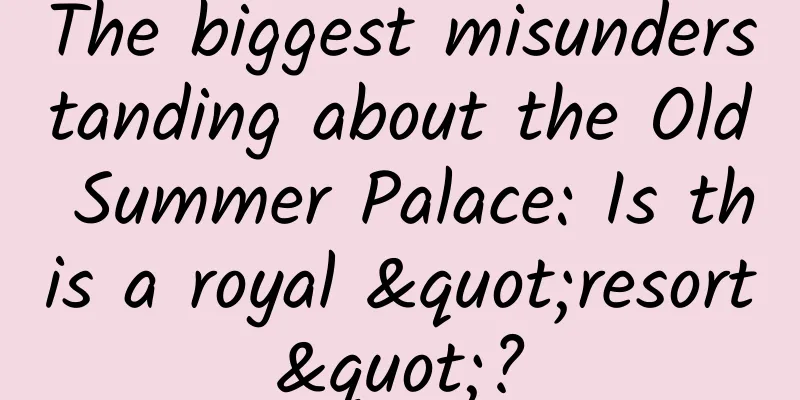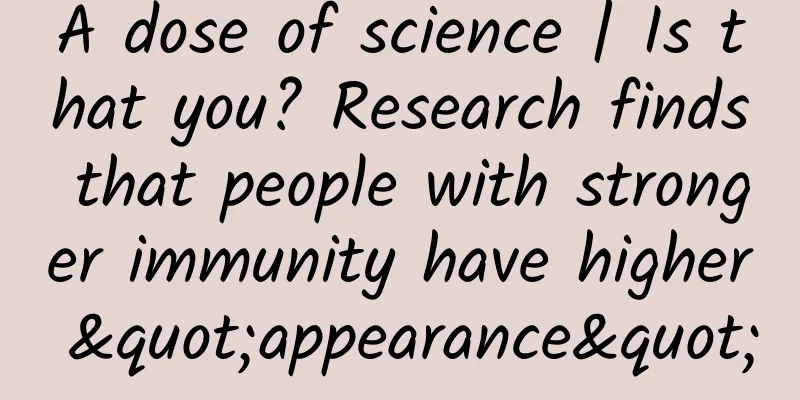Exaggerated! World famous paintings have been hanging upside down for 75 years? What do scientists say about aesthetics?

|
Recently, the art world has made a ridiculous "big news": a famous painting exhibited in the North Rhine-Westphalia Art Collection in Germany was hung upside down - and it has been hung upside down for 75 years. Seeing this, many people may laugh - paintings can be hung upside down, how careless it is. Don't laugh, let's take a look at this painting first - Dutch painter Mondrian (1872-1944) 1 New York City, now in the collection of the North Rhine-Westphalia Art Collection This is a painting by the Dutch painter Mondrian, called "One New York City", but there are neither high-rise buildings nor any people in the painting, only vertical and interlaced geometric lines. How to hang such a painting correctly? Not to mention ordinary viewers, even experts who specialize in studying contemporary art may be confused. Moreover, many people would be confused when seeing such contemporary art works. Isn't this just a colorful Excel spreadsheet? I use it every day at work. How did it become a work of art? This leads to a question: what is artistic appreciation, and how to measure aesthetic ability? Since ancient times, people have put forward various views on what is beauty and how to appreciate it, and many philosophers and aestheticians have different opinions. In the 20th century, some scientists thought that this question might be answered by using psychology and brain science. Can aesthetic ability be “scored”? Scientists have proposed various models of what aesthetics is (Note 2). When it comes to measuring aesthetic ability, their method is to develop a scale. A scale is a set of carefully compiled questions, and the IQ scale and anxiety scale that people are familiar with are representatives of them. The idea of psychologists is to compile a set of questions so that people with high aesthetic ability can get high scores. Wouldn't this accurately measure aesthetic ability? What does such a scale look like? For example, in 1979, psychologists compiled a visual aesthetics scale that included 42 pairs of pictures, one of which was rated by experts as more artistic, and the other was the same picture with a different appearance. The test subjects were asked to judge which one was more beautiful. These psychologists believed that if a person could distinguish between the two pictures, it would naturally indicate a higher level of aesthetics (Note 3). This method sounds reliable, but if you think about it carefully, you can find its flaws. First of all, this scale cannot define what aesthetic ability is. It is more like a knowledge test. If a person has studied art and seen many works of art, it is easy to get a high score. In addition, this scale can test works such as paintings and sculptures, but it is powerless for forms such as music and poetry. Finally, the pictures contained in similar scales are all developed by European and American scientists. People from other places may suffer if they use them directly. If they are not revised, the test results will be unreliable. The scale method can give an accurate score, but the meaning of this score is often unclear. In the following decades, psychologists have compiled a variety of scales, and the compilation methods have become more and more sophisticated. However, everyone also admits that the scale is an important auxiliary method and cannot be used solely to rate people's aesthetic ability. The scale method has limitations, so are there other ways? Scientists have invented methods such as functional magnetic resonance imaging to study the brain's response to different psychological activities. Many scientists have come up with a new method to study aesthetic ability. When people appreciate art, they can take a group of pictures of their brains. This method may solve the millennium-old problem of art and aesthetics. Following this idea, scientists have proposed an emerging interdisciplinary subject called neuroaesthetics (Note 4). Using the latest brain science technology, scientists have made many discoveries. For example, when appreciating visual art, not only is the visual area of the brain highly active, but the frontal cortex is also activated (Note 5). The frontal cortex is the area of the brain responsible for complex abstract thinking and emotional activities. At this time, the reward pathway responsible for pleasant experience is also activated, giving people a feeling of pleasure (Note 6). The pictures used in the experiment have an "artistic" version and a normal version of the same picture. Participants judged whether a picture was pleasant or not, and the visual area, frontal cortex and other brain areas were activated Brain scientists further studied what kind of art can trigger people's aesthetic experience and summarized many principles. For example, prominent and isolated objects stimulate the brain more strongly. Also, similar things combined into a group are more stimulating than randomly placed. In addition, the brain has a preference for visual information. If there are too few lines and the colors are too simple, it will not feel stimulating. If there are too many lines and the colors are too rich, it will feel unbearable. The brain likes it best when the complexity of the stimulation is neither too much nor too little. (Note 7) Psychologists have found that carefully arranged objects can cause visual pleasure, and the Olympic rings logo is an example of this. In addition, brain scientists believe that aesthetics is also related to evolution. Human ancestors did not have artworks, but they did have aesthetic experience. Primitive people could also feel beauty when faced with beautiful scenery and beautiful people. Today, when people appreciate landscapes and portraits, they still retain the aesthetic habits of their ancestors. For example, regardless of the aesthetic culture, everyone has a relatively consistent standard for beautiful faces, and even babies can recognize which face is more attractive (Note 8). Some of these studies have broken down artworks into visual signals, while others have interpreted the origin of aesthetic ability from an evolutionary perspective. They provide people with a different way of thinking about art. However, it may not be appropriate to apply the results of these studies directly to aesthetic ability. Some scientists have people appreciate artworks while scanning their brains and rating the intensity of brain activation. The stronger the activation, the stronger the aesthetic experience. Brain scientist Alva Noe has criticized this type of research, saying that it only observes the brain's response, and whether this response comes from the aesthetic process is actually something that cannot be answered (Note 9). In the final analysis, beauty, art, and aesthetics are all extremely complex concepts, and are related to people's subjective experience. The brain is the most complex organ in the human body, and the objective scientific method is used to study it. People's research on the brain is still very rudimentary. Scientists have only taken a small step to get into the brain and use scientific methods to figure out beauty and aesthetics. How to improve aesthetic ability? If there is no unified definition of "aesthetics", then isn't "cultivating aesthetic ability" even more unreliable? Are all those parents who work so hard to give their children some aesthetic education and hope to improve their children's aesthetic ability wrong? In fact, if you want to improve your aesthetic ability, scientific research still provides some good suggestions. Scientists used a scale to test many people's artistic level, and also tested their intelligence and personality traits. The results found that artistic level has nothing to do with intelligence, introversion, extroversion, friendliness, stability, etc., but only has something to do with whether a person is open to experience (Note 10). French sculptor Rodin said, "There is no lack of beauty in life, but a lack of eyes to discover beauty." Scientists have given a new way of thinking about aesthetics, rather than a set of universal aesthetic formulas. If you want to improve your aesthetic ability, the most traditional method is still effective: watch more and learn more. Research in psychology and brain science reminds us to keep an open mind when appreciating art. Art from different countries and historical periods has different characteristics, coming from different inheritances and aesthetic systems. Only with an open mind can we immerse ourselves in different art categories. When we see something we have never seen before, our first reaction is to frown or pout, which is probably not conducive to improving our aesthetic taste. Moreover, in the view of psychologists, aesthetics is indeed divided into novices and experts. A person can appreciate beautiful scenery and beauties by instinct, but without learning, he cannot appreciate Chinese paintings or symphonies. Art creation has a teacher and rules. In addition to having an open mind, spending time learning art knowledge and even learning some creative techniques in person is the only way to improve aesthetics. Oltermann, P. (2022, October 28). Mondrian painting has been hanging upside down for 75 years. The Guardian. https://www.theguardian.com/artanddesign/2022/oct/28/mondrian-painting-has-been-hanging-upside-down-for-75-years Chai Fangyuan, Yu Feng, Peng Kaiping (2016) Aesthetic pleasure and processing fluency. Psychological Exploration, 36(02):101-106. Chatterjee, A., & Vartanian, O. (2014). Neuroaesthetics. Trends in Cognitive Sciences, 18(7), 370–375. https://doi.org/10.1016/j.tics.2014.03.003 Götz, KO, Lynn, R., Borisy, AR, & Eysenck, HJ (1979). A New Visual Aesthetic Sensitivity Test: I. Construction and Psychometric Properties. Perceptual and Motor Skills, 49(3), 795–802. https://doi.org/10.2466/pms.1979.49.3.795 Kühn, S., & Gallinat, J. (2012). The neural correlates of subjective pleasantness. NeuroImage, 61(1), 289–294. https://doi.org/10.1016/j.neuroimage.2012.02.065 Lacey, S., Hagtvedt, H., Patrick, VM, Anderson, A., Stilla, R., Deshpande, G., Hu, X., Sato, JR, Reddy, S., & Sathian, K. (2011). ART FOR REWARD'S SAKE: VISUAL ART RECRUITS THE VENTRAL STRIATUM. NeuroImage, 55(1), 420–433. https://doi.org/10.1016/j.neuroimage.2010.11.027 Ramachandran, V., & Hirstein, W. (1999). The Science of Art: A Neurological Theory of Aesthetic Experience. Journal of Consciousness Studies, 6, 15–51. Wald, C. (2015). Neuroscience: The aesthetic brain. Nature, 526(7572), Article 7572. https://doi.org/10.1038/526S2a Noë, A. (2016). Strange Tools: Art and Human Nature (Reprint edition). Hill and Wang. Silvia, PJ (2007). Knowledge-based assessment of expertise in the arts: Exploring aesthetic fluency. Psychology of Aesthetics, Creativity, and the Arts, 1, 247–249. https://doi.org/10.1037/1931-3896.1.4.247 |
<<: Does spending money to buy happiness really work?
>>: Are there any carcinogens hidden in your home? Check now! Many people don’t know yet
Recommend
How to promote Tik Tok? What are the channels for promoting Tik Tok?
How to promote Tik Tok ? What are the channels fo...
Ulanhot SEO training: How SEO services can diagnose the basic status of a website
We often come into contact with many different ty...
World Glaucoma Week丨Be careful! Your eyesight will be "stolen" by it!
The second week of March every year is World Glau...
Want to grow your user base quickly? How can you succeed if you don’t understand fission distribution!
We see more and more course posters in WeChat Mom...
Sony Soundbar HT-Z9F: Vertical Surround Engine Technology Creates Immersive Movie-Watching Experience
This summer is particularly hot. Except for going...
Beware! Be careful when this screen appears on WeChat! These 15 minutes are critical
When using WeChat to transfer money If your phone...
How powerful is “Deep Sea One”?
Editor's Note In the past 2021, all walks of ...
How to correctly and completely disassemble an App
We all know that Internet workers, especially tho...
Don't buy this kind of New Year flowers! It's illegal and poisonous
Review expert: Hu Jiayu, Master of Botany, Univer...
Besides iOS and Android, what is the third largest mobile system in the world?
Today, more than 80 million devices run KaiOS, wh...
A century-old hot spring hotel in Japan has not changed its water for half a year! How to take a hot spring bath in a healthy way?
A century-old hot spring hotel in Japan was expos...
ParallaxScrollView - Parallax scrolling
introduce Implement a scroll view with parallax s...
Why did human evolution move towards the pursuit of intelligence rather than physical strength?
Many people believe that mental labor is more adv...
Tencent practical case! How did you redesign the QQ online status after more than ten years?
"Ahem, ahem" - old QQ users must be fam...
Digging up the roots | Is the gastrointestinal tract an emotional organ? Will not eating well make you "stupid"? The answer is beyond many people's expectations!
gossip We all know the importance of the stomach ...









